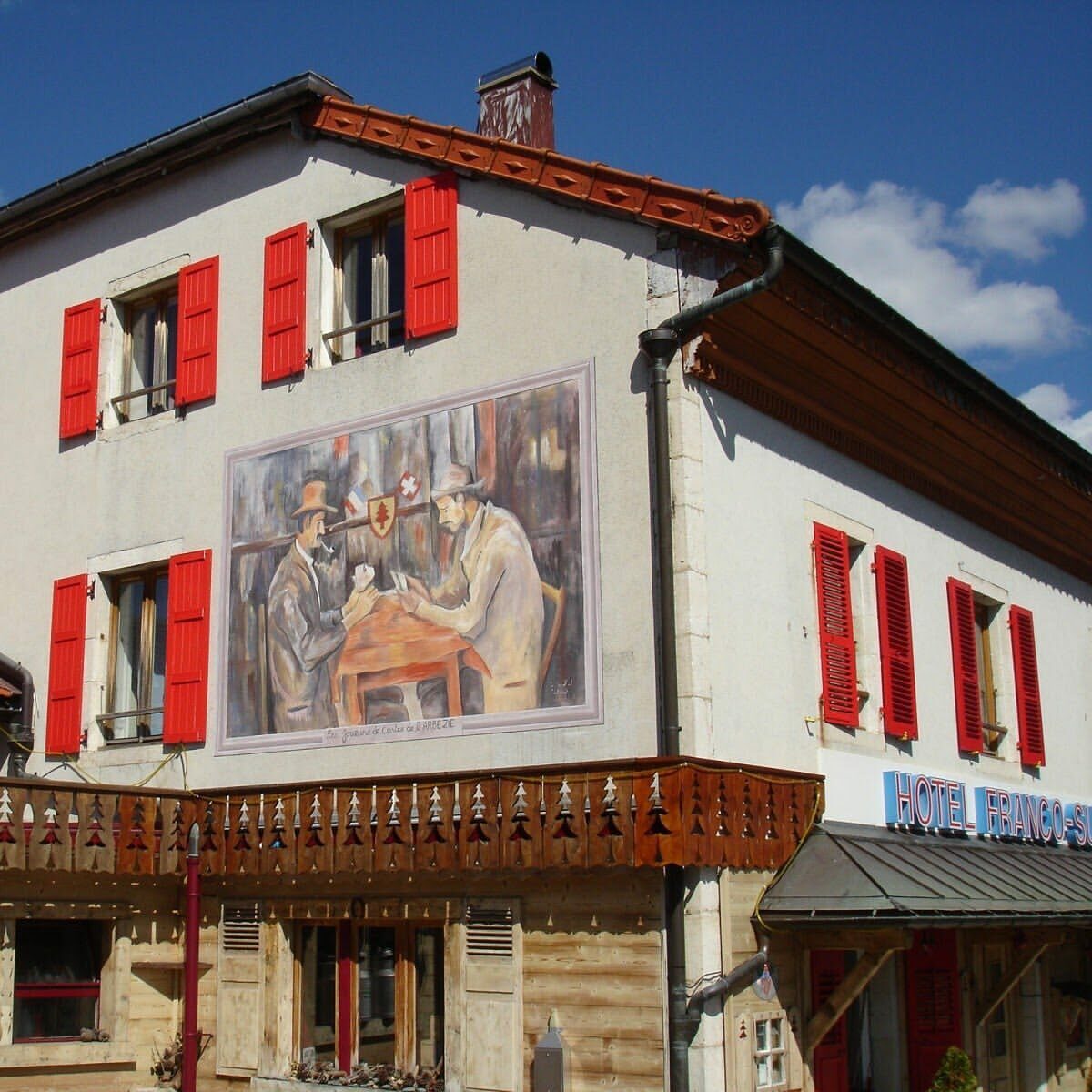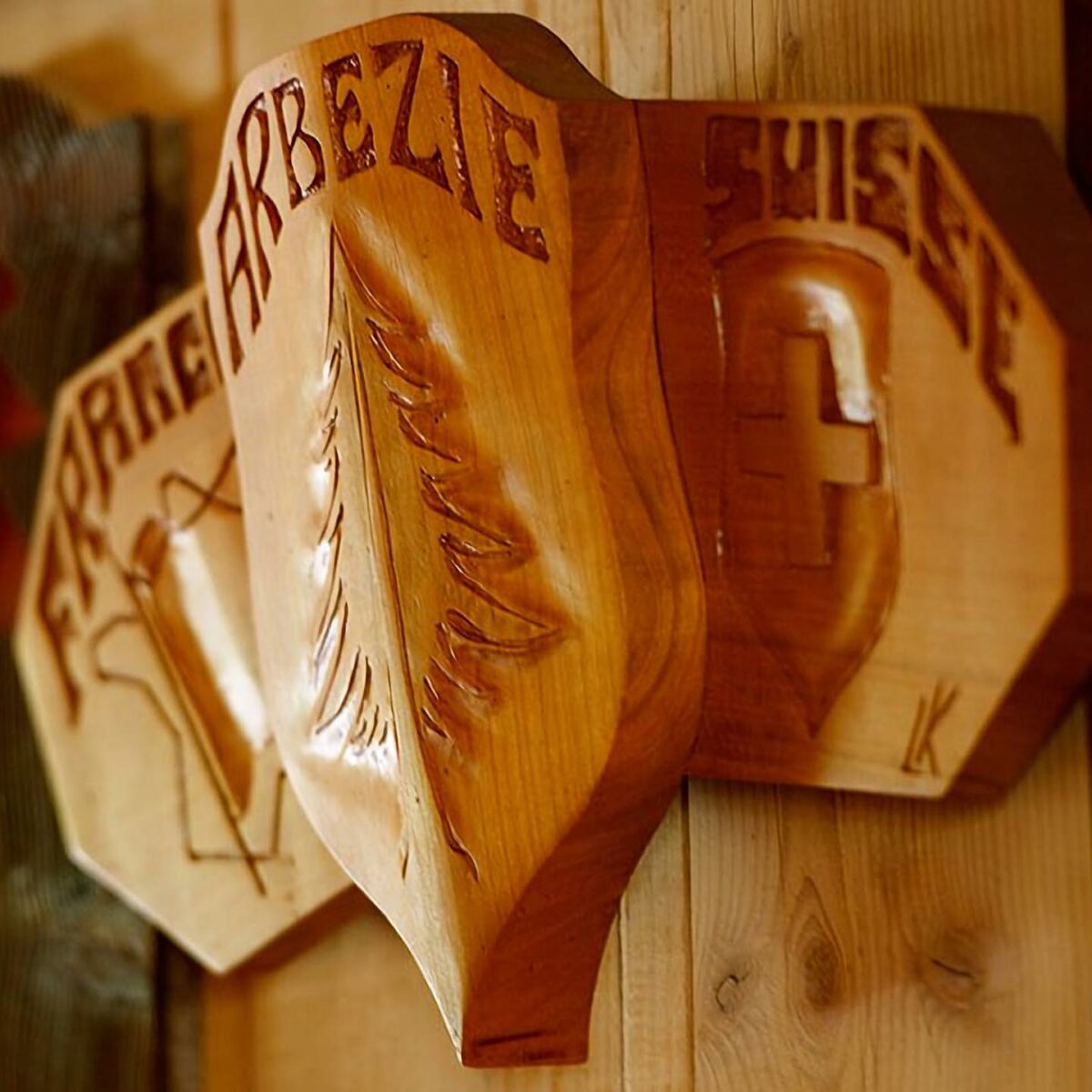
8.1
Ever slept with your head in one country and your feet in another? This week’s new Alpine Utopia pick, Hotel Arbez Franco-Suisse, allows visitors to do just that thanks to its curious position on top of the border between France and Switzerland. Nicknamed Arbézie, the hotel is shared by the town of Les Rousses, in the French Jura, and the town of Saint-Cergue, in the Swiss canton of Vaud. It has been run by the same family, the descendants of the founder, for several generations. The hotel’s strange tale begins in December 1862, when Napoleon III decided to redraw the border between France and Switzerland. The Treaty of Dappes was drawn up, but not ratified until February 1863, and in this time a smuggler named Ponthus, sensing an opportunity, decided to build a house on the new borderline. Ponthus got a lucky break, as the new treaty didn’t affect the ownership rights he had acquired before it was ratified and he could therefore keep his house. He then decided to set up a bar on the French side and a shop on the Swiss side. When Ponthus died, the building was taken over by his sons and transformed into the Hotel Arbez Franco-Suisse in 1921. The hotel became a local curiosity and expanded thanks to an influx of tourists keen to indulge in the latest trend for winter sports.

8.2
Back in the 1950s, Edgar Faure, before he became the French premier, gave the hotel the nickname “Arbézie”. In 1958, Max Arbez, the descendant of Ponthus who ran the hotel at the time, decided to play on this nickname: he made the hotel a micronation, gave it a triangular flag like the shape of the land, with a red spruce tree on a yellow background, and created the ‘Arbézienne rupee’ as its currency. He proclaimed himself Prince Max I of Arbézie and made the French President Charles de Gaulle his first honorary citizen when he came to La Cure. The hotel itself is like something from a Wes Anderson movie, or even a Samuel Beckett play – full of absurd and paradoxical situations due to its location on the border. Bedrooms will be in France with a bathroom in Switzerland, or certain windows are allowed by the French authorities but banned by the Swiss. In fact, it proved too strange even for fiction when the director Gérard Oury tried to use the hotel for his film “La Grande Vadrouille” (1966), in which French civilians help the crew of a Royal Air Force bomber shot down over Nazi-occupied Paris to make their way through German-occupied France to safe territory. When he went to scout the location, he realised that the eccentricities and absurdities of the hotel required too much from the audience in suspending their disbelief that a hotel could have half of a room in neutral Switzerland and the other in France.

8.3
The Hotel Arbez Franco-Suisse is not just a curiousity. In fact, its unique location has allowed it to play an important role in history, particularly in the resistance against the Nazi occupation. During the Second World War, the demarcation line between the Nazi-occupied zone and the free zone passed right in front of the hotel. From 1940, the Arbez family took advantage of the hotel’s exceptional location and structure to help Jews, fugitives and English pilots escape from France to Switzerland. This made the hotel an important waypoint for the organised Resistance. At the end of the war, the owners, Max and Angèle Arbez, were personally thanked by the leader of the Free French Charles de Gaulle for their acts of bravery and resistance. Earlier this year, Max Arbez was recognized as Righteous Among the Nations by the Yad Vashem Memorial in Jerusalem. His wife, aged 103, had already received the medal of honor in her husband’s name, in February 2013. The hotel, because of its geographical and legal location, also played a role in the Évian Accords, securing Algerian independence from France and a cooperative relationship between the two countries. The French diplomats came from the French side of the hotel, while the Algerian representatives came from the Swiss side. As the current owner of the hotel explains, “the beauty of this place and its history is that everything blends together, everything blurs, as if that line disappears. It is truly a place where anything is possible, and the facts, so far, continue to prove it.”